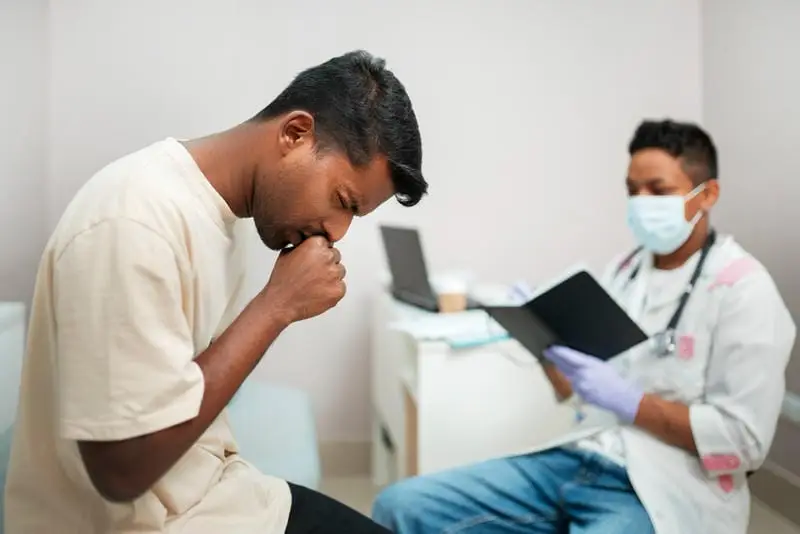- Published on: Sep 19, 2021
- 2 minute read
- By: Second Medic Expert
What Is Hyperglycemia, And How Is It Controlled?
What is hyperglycemia, and how is it controlled?
Hyperglycemia is an elevated level of glucose in the blood. Diabetes mellitus and impaired insulin secretion are the most common causes, and it can be controlled through diet and exercise.
Diabetes management consists primarily of following a carefully planned individualized diet that helps prevent over-or under-nutrition as well as traditional diseases such as heart disease, stroke, certain cancers, high blood pressure, obesity, and others. Remaining physically active is also crucial to maintaining optimal wellness for people with diabetes--as well as those who want to keep their diabetes from getting worse!
Hyperglycemia is when your blood sugar levels are at least 120 mg/dL. This is classified as a non-ketotic diabetic coma. It can be controlled by eating healthy (eating fruit, vegetables, and sugars), regulating insulin infusions, and taking medications like metformin to decrease the amount of sugar in your bloodstream or sulfonylureas that stimulate the pancreas' beta cells to produce more insulin. Hyperglycemia is the result of too much glucose in your bloodstream. You can control it through diet and exercise, but diabetes treatment medication is often necessary.
Your body regulates blood sugar by releasing insulin when you eat carbohydrates. This makes cells release their energy stores to make up for what's consumed. When this isn't enough, insulin levels are boosted with medications, or doctors instruct patients to start injecting themselves with insulin instead." Hyperglycemia is a condition in which the blood sugar level becomes dangerously high. To control hyperglycemia, you can either reduce your food intake or increase your exercise. Both methods are effective at restoring the body's proper functioning and managing blood glucose levels.
Hyperglycemia is typically caused by diabetes, or more specifically by insulin problems, too much alcohol consumption, dehydration, or intense exercise. It's controlled by monitoring your blood sugar levels with a finger prick test looking for unhealthy spikes and rapid drops in blood sugar levels.
Hyperglycemia can generally be controlled with diet and lifestyle changes because it's primarily characterized by increased glucose levels in the bloodstream, not severe drops in glucose levels that typically happen for diabetes patients. This means that eating fewer carbs (especially refined sugars), exercising more often, and managing stress can usually regulate hyperglycemic symptoms like fatigue and headache without the need to take medication like insulin injections.
Hyperglycemia is controlled by diet and various drugs, such as insulin and Metformin. Hyperglycemia can be caused by not taking enough insulin or if you are eating food that contains sugars like candy, soda, cake, etc.
Some common causes for Hyperglycemia are eating too many high glycemic index foods, having inadequate control of type 1 diabetes through insulin injections, obesity, and childbirth.
Diabetics should monitor their blood sugar levels at least four times per day using a self-monitoring kit so that they can quickly treat it before it reaches very dangerous or even fatal levels. If you suspect you have hyperglycemia without checking your blood sugars yet take immediate steps to keep your glucose under control by drinking water, breaking carbohydrates up in small portions throughout the day to decrease spikes in insulin production, breaking down proteins in smaller doses
When the body metabolizes carbohydrates into glucose, any excess of this sugar in the bloodstream (and cells) will cause blood sugar levels to soar. There are four ways to reduce small amounts of hyperglycemia--medications like metformin or cromolyn sodium; physical activity; diet; and weight loss. Dietary restriction, for example by reducing carbohydrate intake, can lower blood sugar up to 60% (depending on how many carbohydrates you eat).
Controlling hyperglycemia is done by lowering the amount of glucose that enters the bloodstream, also known as prevention through healthy eating habits and regular physical activity. Controlling medication can be used to keep blood glucose levels within the normal range if they're too high or too low. For patients with diabetes, controlling insulin dosage or adding diabetes medications may help to control hyperglycemia more effectively than diet alone. It's important for people on any medication regime not to change the dosage on their own but instead check with their doctor first so as not to put themselves at risk for adverse side effects that may result from improperly regulated dosages.









